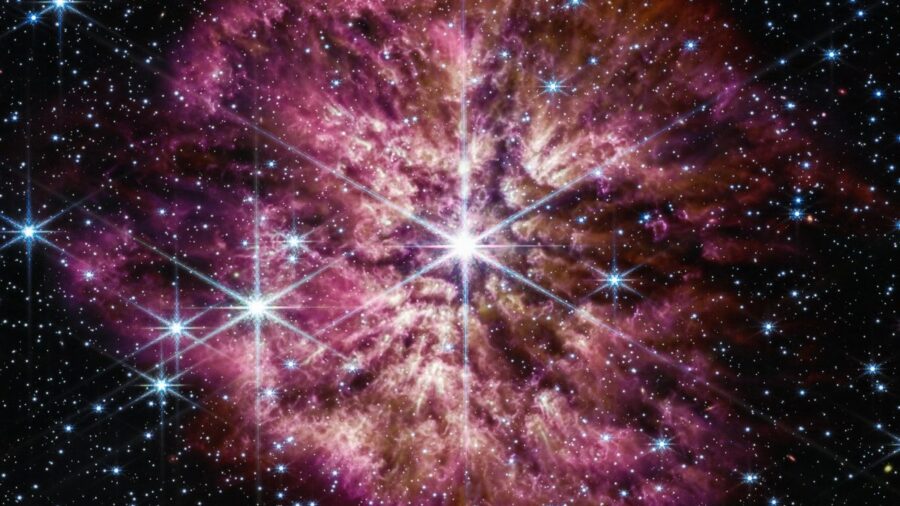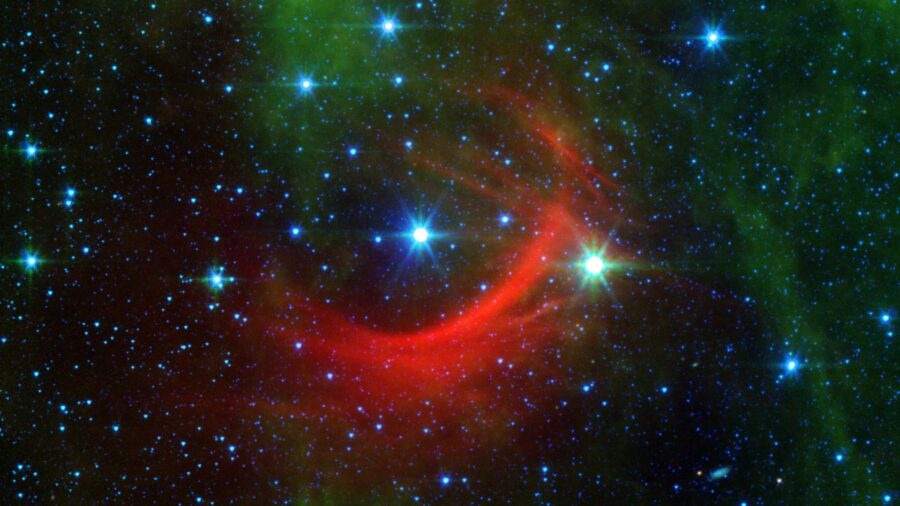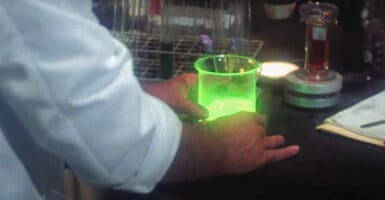Runaway Star Moving Faster Than Scientists Have Ever Seen
A runaway star exiting the Mily Way is one of the fastest objects ever recorded by humans.

According to ScienceAlert, astronomers have identified six new runaway stars, two of which are moving faster than any previously recorded. The speed measurements are taken according to the stars’ heliocentric radial velocities, that is, their velocities with respect to a fixed point—namely, Earth. The slower of the two fastest stars is J1235, traveling at 1,694 kilometers (1,053 miles) per second, while J0927 has an even greater speed of 2,285 kilometers (1,420 miles) per second.
These two runaway stars are among four newly measured hypervelocity stars, which are stars that travel faster than the Milky Way’s own escape velocity. Astrophysicist Kareem El-Badry and a team at Harvard-Smithsonian Center for Astrophysics believe these stars are probably the product of Type Ia supernovae. These supernovae occur in binary systems of two stars orbiting each other and, because they reach a fairly consistent critical mass, have a peak luminosity that can be used as a standard for measuring the distance to their host galaxies.
This “standard candles” measurement has provided a new way to calculate the rate of the birth of runaway stars, and the team has found this rate to be consistent with that of Type Ia supernovae. The team’s findings were published in the Open Journal of Astrophysics. According to the research paper, there might be a great deal more of these stars to be found.
A runaway star is the product of an exploding star, bits of which can be tossed out into space at great velocity by the force of the explosion. It is believed that hypervelocity stars are created by D6 supernovae, which have an even greater explosive force, and are so named for their “dynamically driven double-degenerate double-detonation.” A Type Ia supernova occurs when a dying white dwarf is orbiting another star closely enough that, as it begins to collapse, it siphons matter from the other star.

If that matter happens to be helium, the process creates a thermonuclear explosion, which is likely the cause of these super-fast runaway stars. The reason for this is that the shockwave from the detonation of the helium causes a second explosion in the white dwarf’s core. That massive explosion is the double-degenerate double-detonation, which is believed to send the star whose helium was sucked away rocketing off at a great speed.
The hypervelocity of these runaway stars is more than 1,000 kilometers per second, well in excess of the 550 kilometers per second required to escape the Milky Way galaxy. This means that these stars are on their way out of our galaxy. However, how many of them there might be remains to be seen, meaning there could be even faster ones out there.
El-Badry and his team did further research and found that four other D6-origin hypervelocity stars with a D6 origin had been identified. By their calculations, if there are enough Type Ia supernovae that produce D6 stars, our galaxy may very well have sent over 10 million runaway stars out into space beyond the Milky Way. We should even have some in our galaxy that have been launched from other galaxies.
Researchers now hope to model the thermal evolution of D6 stars to better understand the birth rate of these runaways.












